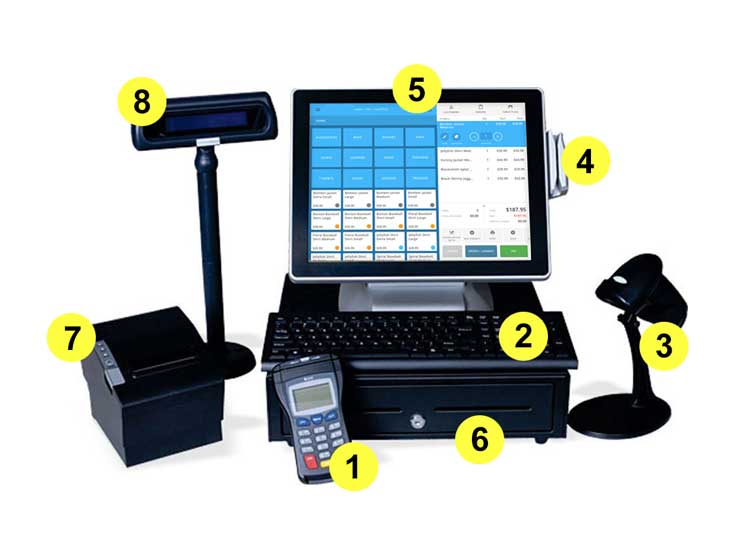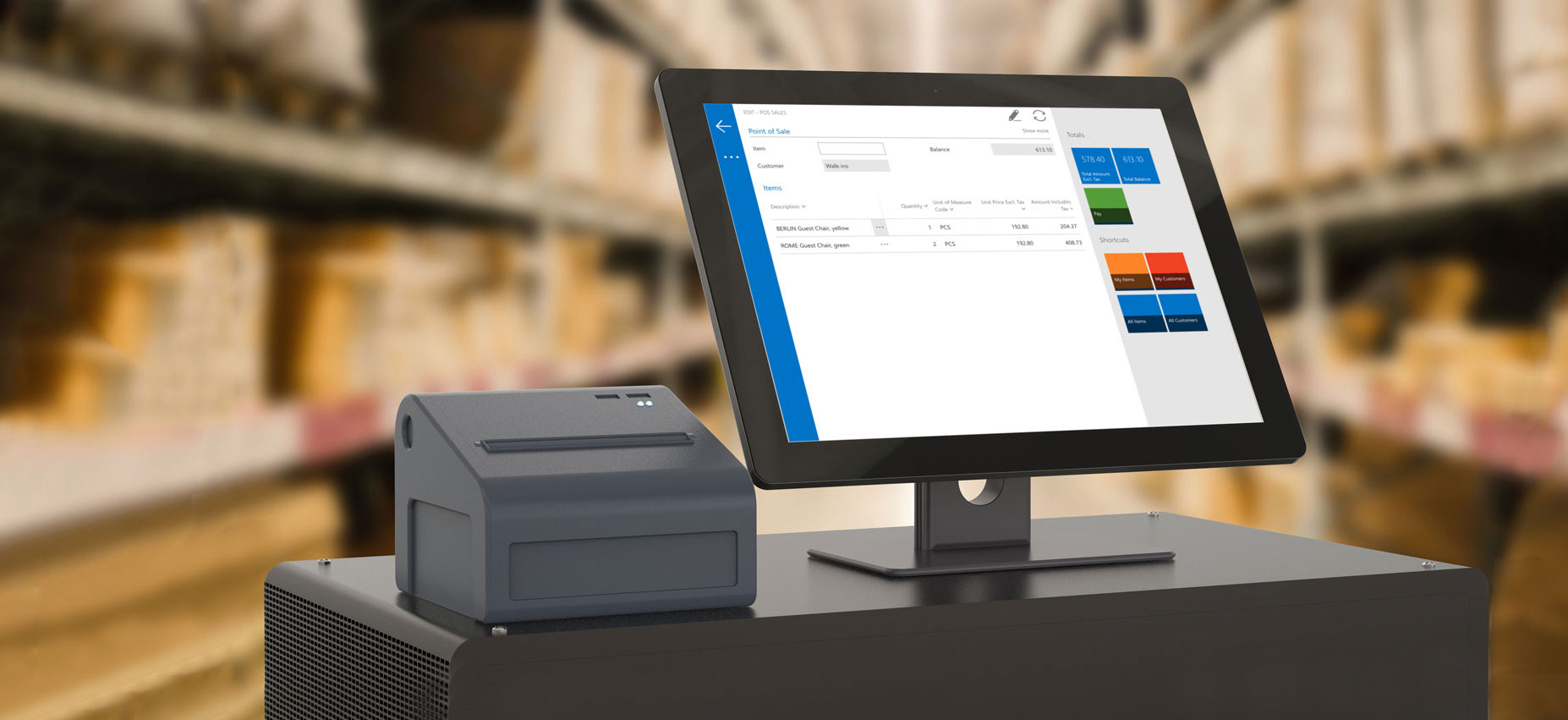Whether you’re looking to improve your marketing, sales, delivery processes, or inventory management, the right POS system can help you reach your goals.
Think of POS systems as retail management systems. They handle checkout and payment, but they also facilitate inventory management, staff scheduling, customer management, reporting, and more.
A POS system will provide powerful insights and help you answer important questions like:
- Should you be open on Saturday evening?
- What are your most profitable items? And the least?
- Who’s your top salesperson?
- Which marketing campaign is working best?
This guide covers everything you need to know about point-of-sale systems.
You’ll learn about the types of POS systems, available features, and we’ll give you our take of the best POS systems. We’ve also created a 4-step framework to help you choose the best POS solution for your business.
What is a POS System?
A POS (point of sale) system is a retail management system that processes orders and payments.
The POS system is a combination of hardware and software that handles the entire checkout process from barcode scanning to payment processing. It may also handle back office management, scheduling, payroll, and reporting.
One of the core features of a POS system is the ability to accept multiple forms of payment. Cash, cards (credit and debit), and mobile payments are all in use now. New methods, like Bitcoin, will come soon.
There are many other features depending on your specific vertical, however most systems rely on similar hardware components.
POS System Hardware Components

The primary functions of retail POS hardware include entering orders, scanning barcodes, taking payments, handling cash, and printing receipts.
1. Terminal
The terminal is the hardware interface customers use to make payments.
Some POS systems offer wireless handheld terminals that can improve customer experience and employee efficiency by allowing sales to take place at various locations within your establishment, as opposed to being limited to checkout counters.
2. Input Devices
POS systems rely on familiar input devices such as a keyboard and mouse. These components are hardware attached to the terminal or they may be accessed through software on the display unit.
3. Barcode Scanner
The barcode scanner helps expedite the checkout process by pulling up the product information through barcodes and adding the items to the checkout list.
Barcode scanners connect with the POS system’s inventory management module to update product stock levels automatically as you sell goods.
4. Card Reader
The card reader reads the magnetic strip in credit and debit cards.
The card reader can also scan ID cards so you can track sales from multiple employees on the same device.
5. Display Unit
The display unit is at the core of every POS system. The display unit is the primary interface used to process orders and manage the checkout process.
It can also reconcile cash and view inventory, customer information, and performance data. More on that later.
6. Cash Drawer
Most POS system providers offer a choice between distinct types of cash drawers. Cash drawers feature key locks or removable cash trays for security.
7. Receipt Printer
Most POS systems come with a receipt printer.
Many newer POS systems also offer alternative receipt delivery options via text or email.
8. Display Pole
The display pole provides customers with a running total of items scanned, including prices and other order information.
POS System Software Components
The function of the software is to process payments, manage and track inventory, handle customer management, and report on business activity.
The two primary options for POS software are on-premise (aka “legacy” or “traditional”) and cloud-based (aka “hosted”). Here are the critical differences between the two.
On-Premise POS Software
On-premise POS software is an investment. By investing in an on-premise system it’s likely that you could have lower lifetime costs by avoiding fees for software and maintenance.
As you shop around, focus on open-source software without recurring subscription fees to ensure you get the best ROI.
Also, be sure to keep a backup of your system, preferably off site, in case the software gets corrupted.
- Installed locally on hardware at your location
- You maintain and update the software
- Expect to pay more up front to buy a license and dedicated hardware
Cloud-Based POS Software
Most businesses opt for cloud-based POS software because of the affordability – prices could be as low as $75 per month.
The subscription fee for hosted POS software includes robust data security, ongoing updates and maintenance, third-party integrations, and persistent backups.
- Software runs in the cloud so it is location agnostic and scalable
- Low upfront costs with flexible leases
- IT staff not required for service, maintenance, and updates
Types of POS Systems
The best POS system for your business depends on your niche and what types of products you sell. POS systems now cover all major verticals.
A business specific system will include features, workflows, and reporting to help streamline your operations.
Restaurant POS System
The most important factors when choosing a restaurant POS system are its speed and ease of use. Simple and intuitive user interfaces help expedite orders while minimizing mistakes and ensuring accuracy.
Solid hardware with snappy software gives hosts, waiters, managers, and cooks the instant feedback they need to keep up with the increasingly tight demands of this business. An easy-to-use POS system will also help simplify new hire training and improve staff retention.
A restaurant specific inventory management module is a precious feature. Look for a POS system that offers ingredient-level tracking. Aside from simplifying your daily inventory management, you can use this data to forecast how much you must order for seasonal rushes and events.
Reports will help you compare revenue by shift so you can reward and reward your best employees. You can also see the average spend per cover and party. Marketing integrations will help you understand which of your campaigns is driving the most business.
Retail POS System
POS systems designed for retail compliment your customer experience. Popular retail POS features include:
- Customer-facing display
- Wireless terminals
- Barcode reader
- Quick keys for common items
- Bulk product imports
- Product stock reports
- Loyalty programs and promotions
Mobile POS (mPOS) Solution
If you can sell products and services outside of your retail location (assuming you even have one), you should take advantage of it.
Mobile POS solutions make it possible for you to do business just about anywhere. A mPOS runs on an app on your phone, laptop, or tablet to process payments.
Square popularized mPOS when they launched their ubiquitous white square-shaped credit card reader that fit in the headset jack of smartphones in 2010. Others saw the outstanding potential, and now there are many hardware and software options to choose from. You can process payments using magnetic stripe, chip, and mobile.
Grocery & Convenience Store POS System
The combination of high-volume sales and perishable inventory created the need for grocery POS systems that are especially efficient at inventory management.
Grocery POS systems make it possible to manage daily deliveries from multiple vendors. These POS systems track every item, so you know when your stock will spoil. Knowing this gives you the knowledge you need to decide if you will discount items or refresh your inventory.
Payroll management and employee scheduling are other important areas where a grocery POS system can help save time and money – especially considering the additional regulations that you need to comply with when you’re employing minors. Grocery POS systems will track employee hours worked and notify managers if a minor is close to a violation for missing breaks or working too many hours.

